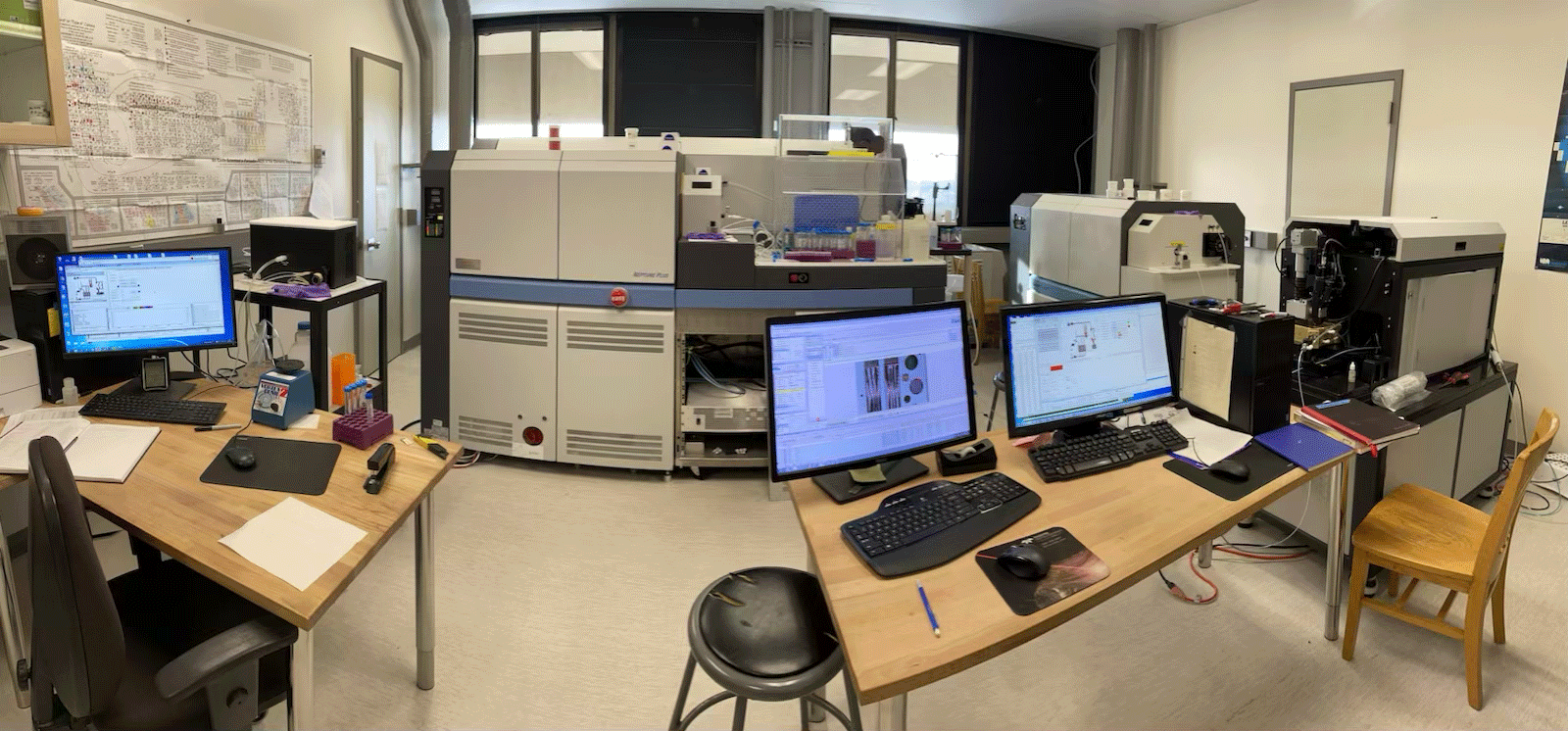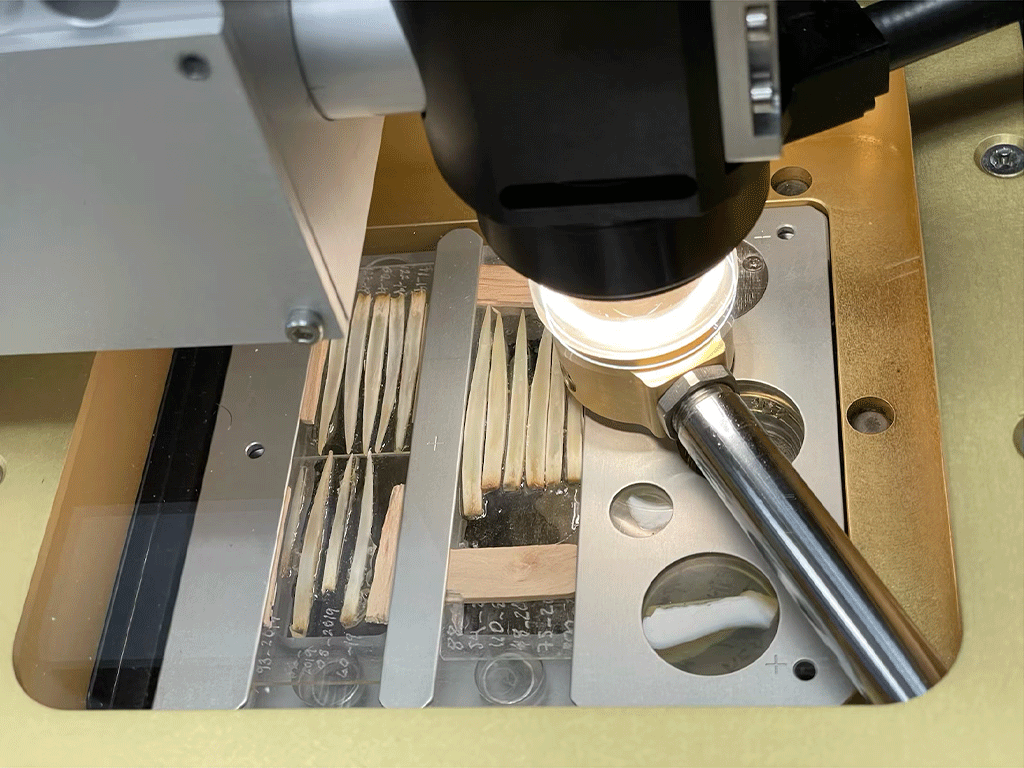The View from the Lab
The view from the lab is, as usual, fantastic, as I prepare to gather the data that will tell us how largetooth sawfish move within the vast Amazon coast of Brazil. Located on the tallest hill on campus, the lab windows have a view that stretches over the beautiful, rolling hills of the Palouse region in the Northwest corner of the United States. On a clear day I can see three US states: Washington, Idaho, and Oregon. But to do that I have to gently pick my way in stocking feet (shoes are verboten, they bring dust that can contaminate the analysis) between two hulking machines across a maze of tubes carrying cooling water and argon and nitrogen gas.

Palouse region in the United States of America. Photo © Mark A Lee | Shutterstock
These tubes, and the exhaust vents above, are the lifeblood that keep these two machines running. The first machine, the Thermo Neptune Plus, is the size of a Smart car. The smaller one is about half that size, the Thermo Element 2. These two machines are what will tell us how largetooth sawfish move between salty ocean water, brackish estuaries, and freshwater rivers.

The lab and ICPMS machines where our analysis of sawfish rostral teeth takes place. The Thermo Neptune Plus is on the left, the Thermo Element 2 is in the middle, and the laser ablation system is on the far right. Photo © Jens Hegg
As their environment changes, or the sawfish moves to a new environment, the salinity of that environment is recorded in the mixture of the elements strontium and barium in their rostral teeth. These patterns, I think, can tell us a lot about what sawfish are up to. This day in the lab will give us the data to say if that is true.
Largetooth sawfish tend to have their babies in fresh water, likely to avoid the big, nasty predators in ocean water. Saltier water has its advantages though, with potentially larger food sources that likely draw adult sawfish into estuaries and other saltier water. But, we know very little about where largetooth sawfish go in the Amazon. If we can learn where they go, where they have their babies, and where those babies like to hang out, this could really help us support their populations, but the first comprehensive studies are just beginning.
Thinking about the exciting possibilities in this work I load four microscope slides into the sampling tray. A green laser 30 microns across works its way down the middle of each tooth, blasting a furrow half the depth of a human hair and barely wider, sending the microscopic particles through one of those tubes I mentioned before. This tiny sample will tell us what the fish has been up to all its life.

Thin sections of sawfish rostral teeth in the sampler tray. The laser shines down through the illumated "cup" to blast the sample from the tooth, then is sucked through the silver tube on the right and into a long plastic tube to each machine. Photo © Jens Hegg
A few nanograms of sample at a time rushes through the tube as an invisible powder. In each machine the plasma chamber at ~6,700oC (~12,000oF) instantly breaks down the sample into its constituent ions, and then it is pulled around a curved track by a massive electromagnet. The ions separate by weight around this curve, heavy ones curve less and light ones curve more. Less than 10% of the tiny sample of sawfish tooth that started down that first tube makes it to the end of the curve. Still, these car-sized machines tell us the abundance of isotopes in our sawfish teeth within less than 10 atoms in a million atoms!
After three days in the lab we have reconstructed the chemical lives of 60 largetooth sawfish. Even before beginning to explore the data I can tell that these fish are moving. The abundance of strontium varies widely through the life of these fish, indicating that they are moving in and out of salty water. It’s no wonder that these fish have been found as deep in the Amazon as the city of Manuas… halfway up the Amazon River! I’m excited to begin exploring the data and teasing out what these fish are up to.
